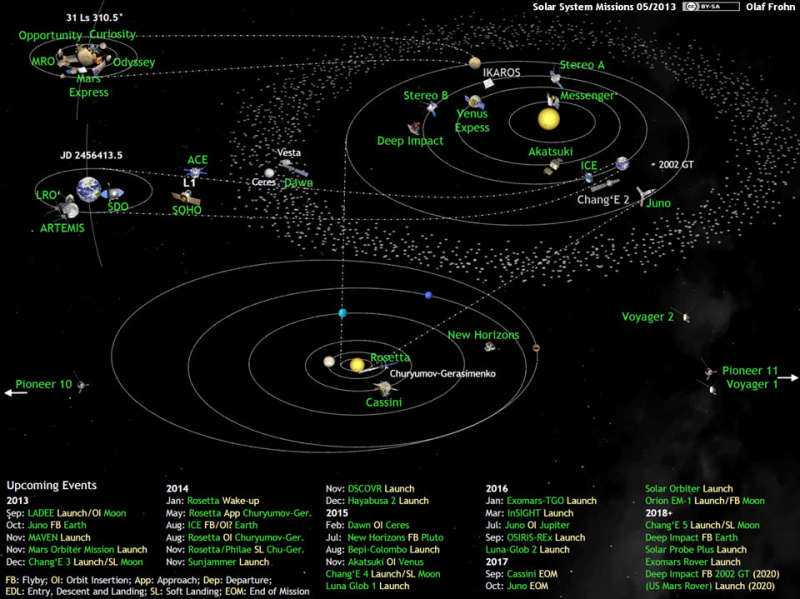Credit & Copyright: Olaf Frohn
(The Planetary Society)
Explanation:
What spacecraft is humanity currently using to explore our
Solar System?
Presently, every
inner planet
has at least
one robotic explorer, while several others are
monitoring our Sun, some are
mapping Earth's Moon, a few are
chasing asteroids and
comets, one is
orbiting Saturn, and several are even
heading out into deep space.
The above illustration gives more details, with the inner
Solar
System depicted on the upper right
and the outer Solar System on the lower left.
Given the present armada,
our
current epoch
might become known as the time when humanity first probed its own
star system.
Sometimes widely separated spacecraft act together as an
InterPlanetary Network
to determine the direction of distant
explosions by noting when each probe detects
high energy photons.
Future spacecraft milestones, as indicated along the bottom of the graphic, include
Dawn reaching
Ceres, the largest object in the asteroid belt, and
New Horizons
reaching Pluto, both in 2015.
Follow APOD in:
Arabic,
Bahasa Indonesian,
Catalan,
Chinese,
Chinese,
Czech,
Dutch,
Farsi,
Farsi,
Galego,
German,
French,
Hebrew,
Japanese,
Polish,
Portuguese,
Romanian,
Russian,
Slovenian,
Spanish,
Spanish, or
Turkish,
Authors & editors:
Robert Nemiroff
(MTU) &
Jerry Bonnell
(USRA)
NASA Web Site Statements, Warnings,
and Disclaimers
NASA Official: Jay Norris.
Specific
rights apply.
A service of:
LHEA at
NASA /
GSFC
& Michigan Tech. U.
Based on Astronomy Picture
Of the Day
